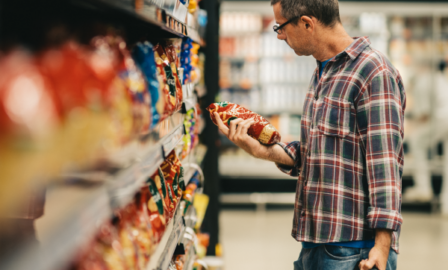Preparing for FSMA 204: The Proposed Rule for Food Traceability
The Food Safety Modernization Act (FSMA) was signed more than a decade ago with the goal of shifting the industry from a reactive approach to a proactive one when responding to and preventing safety and quality issues in our food supply. Even though the Act became law in 2011, many FSMA rules are continuously expanding and evolving to meet our ever-changing needs. Let’s dive into our suggested approach for preparing for FSMA 204.
What is FSMA 204?
On November 7, 2022, the FDA will announce their final ruling for Rule 204, the Traceability Rule. The rule focuses on additional recordkeeping requirements for businesses who manufacture, process, pack, and/or hold foods on the Food Traceability List (FTL). With items ranging from fresh fruits and vegetables to cheeses and eggs, the list is varied and extensive. To create the FTL, the FDA used a Risk Ranking Model, which scored hazardous potential relating to frequency of outbreaks, severity of illnesses, and other related factors.
The FDA expands on specific impacted areas by describing Key Data Elements (KDEs) that are associated with certain Critical Tracking Events (CTEs) such as growing, receiving, transformation, creation, and shipping. Since there are many business operations that will be impacted, it is important to consult FDA resources to ensure there is an understanding of what KDEs apply to you. Currently, these constraints are only for items on the FTL. However, the FDA is encouraging industries to voluntarily adopt these requirements for all foods.
What are the Obstacles and How to Overcome them?
Digital vs. Paper
Recordkeeping is a focus of FMSA204 and can be a large undertaking when ensuring compliance and consistency in documentation. Even though paper and digital records can be acceptable, it’s important to recognize the manual effort and time requirements of keeping paper records. This naturally creates an opportunity to transition from paper to digital record keeping and improve standardization. Also, due to the sheer volume of records, digitization can relieve storage issues and securely maintain historical records. Ultimately, by pivoting to digital recordkeeping, businesses can save time and resources while improving efficiency.
Volume of Data
Organization will be critical as companies must provide traceability records to the FDA within 24 hours of receiving a request. Providing records during the investigation of an outbreak is daunting enough, but even more so if the business isn’t properly prepared to access, gather, and distribute the information. Since large amounts of data can be difficult to support, automation tools are increasing in popularity and being used to assist with collecting KDEs.
Intricacies
A supply chain has many complexities, and some of them can be eased with a strong network that supports each other. To be successful with traceability, a cross-functional team is essential. Working as a team creates more visibility and can reduce food safety risks by quickly identifying and responding to potential issues. While some businesses are approaching Rule 204 through the lens of their own challenges, this should be seen as an opportunity to bring companies together and create robust traceability in the full, end-to-end, supply chain, thus, making it possible to detect outbreaks earlier in the process and identify other areas of improvement.
How to Prepare for FSMA 204?
Once the final ruling of FSMA 204 is published, there will be 60 days before it goes into effect. After the effective date, the FDA will provide a two-year grace period for companies to comply. Compliance will be a significant undertaking and impact supply chains across the food industry. To ensure all regulations are met, it’s necessary to begin as soon as possible.
Preparation for the Rule can be started by identifying all foods on the Food Traceability List (FTL) and understanding what KDEs need to be tracked. By doing this, impacted areas are identified early on and assessments can be conducted fully and completely. Once that is understood, current documentation processes should be checked and questions like: Are all steps captured? Do people follow the procedure? Are records accessible? should be asked. This will identify areas of opportunities and can allow for corrections while working on complying with the Traceability Rule. Finally, since this will impact multiple businesses across the supply chain, it would be beneficial to collaborate with your partners and share best practices.
The global food traceability market is forecasted to hit $28.1 billion by 2030, which demonstrates the growing interest from businesses and consumers alike. The FTL is likely to grow as food recalls occur and consumer awareness grows, so it’s best to adhere to the policies and practices of FSMA 204 proactively. For further guidance on food traceability and best practices, Clarkston can help.
Subscribe to Clarkston's Insights
Contributions from Addie Schmidt



